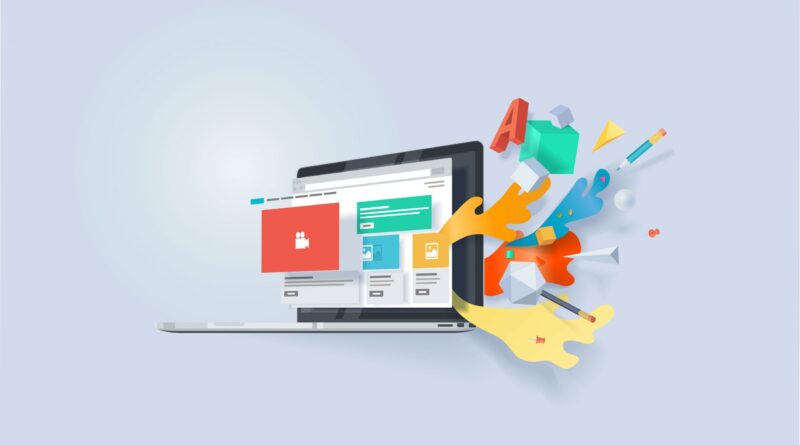Mastering the User Experience: The Intersection of Web Development and UX Design
Understanding User Experience
User experience refers to the overall impression users have while interacting with a website. It encompasses factors such as ease of use, intuitive navigation, visual appeal, and the overall satisfaction users derive from their interactions. A positive user experience is vital for attracting and retaining users, as it directly impacts their engagement, satisfaction, and likelihood to convert into customers or take desired actions.
The Role of Web Development
Web development plays a fundamental role in shaping the user experience. Clean and efficient code, responsive design, and fast-loading websites are essential components in creating a seamless and enjoyable user journey. Front-end development focuses on the user interface (UI) and involves building the visual elements and interactive features of the website. Back-end development focuses on the server-side operations and data management that support the functionality of the website. Both aspects of web development work hand in hand to ensure website functionality and optimize the user experience (UX).
The Collaboration between Web Developers and UX Designers
Successful web development projects require a collaborative relationship between web developers and UX designers. While web developers are responsible for building the technical infrastructure of the website, UX designers specialize in creating user-centric designs that prioritize usability and engagement. Effective communication and a shared understanding of project goals are key to a successful collaboration between web developers and UX designers. By working together, they can leverage their respective expertise to create user-centric websites that fulfill business objectives while providing exceptional user experiences.
User-Centered Design Principles
User-centered design (UCD) is a philosophy that places users at the forefront of the design process. It involves understanding the needs, preferences, and behaviors of the target audience through user research, developing personas to represent different user types, and conducting usability testing to gather feedback and validate design decisions. Web developers can incorporate these user-centered design principles into their development process, ensuring that user needs and preferences are addressed at every stage.
By involving users early in the design process, web developers can gain valuable insights and align their development efforts with user expectations. This approach helps create websites that are intuitive, efficient, and enjoyable to use, ultimately enhancing the user experience.
Optimizing Website Usability
Usability is a critical aspect of the user experience and focuses on creating websites that are easy to use and navigate. Web developers can implement various techniques to enhance website usability. Intuitive interfaces, clear calls-to-action, and well-structured navigation are just a few examples. By prioritizing usability, developers can create seamless user experiences that keep users engaged and satisfied.
Web developers can also optimize the performance of websites to ensure fast-loading times. Slow-loading pages can frustrate users and lead to high bounce rates. Techniques such as image optimization, caching, and minification of code help improve website performance and contribute to a positive user experience.
Responsive Web Design and Mobile Experience
In today’s mobile-centric world, responsive web design is crucial for delivering a consistent and optimal experience across different devices. With the majority of users accessing websites via mobile devices, web developers must ensure that websites are responsive and mobile-friendly. Responsive web design involves creating flexible layouts and adapting content to fit various screen sizes and resolutions. This includes considerations such as responsive typography, touch-friendly elements, and fast-loading pages to create a positive mobile user experience.
Ensuring a seamless mobile experience is vital for user satisfaction and engagement. By providing a responsive and user-friendly design, web developers can cater to the needs of mobile users and deliver a consistent experience across all devices.
Continuous Improvement and Iterative Design
Web development is an iterative process that allows for continuous improvement. Gathering user feedback, analyzing analytics data, and making data-driven decisions are vital for refining the user experience. By embracing an iterative design approach, web developers can consistently optimize the UX, identifying and addressing pain points, and enhancing user satisfaction.
A/B testing and user feedback surveys are effective methods for collecting data on user preferences and behavior. This data can then be used to make informed design decisions and improve the user experience over time. By continuously iterating and optimizing based on user feedback and data insights, web developers can create websites that are tailored to user needs and expectations.
Testing and Quality Assurance
Testing and quality assurance are essential to ensure a seamless user experience. Usability testing, cross-browser compatibility testing, and performance testing help identify and resolve issues that may impact the user experience. Usability testing involves observing users as they interact with the website and gathering feedback on its usability and effectiveness. Cross-browser compatibility testing ensures that the website functions correctly across different web browsers. Performance testing assesses the speed and responsiveness of the website under different conditions.
Rigorous testing throughout the development process ensures that the website functions as intended, providing users with a smooth and enjoyable experience. By addressing any issues or discrepancies found during testing, web developers can ensure that the website meets high-quality standards and delivers an optimal user experience.
Conclusion
Mastering the intersection between web development and user experience design is crucial for creating exceptional user experiences. By understanding the role of web development in shaping the user experience, collaborating effectively with UX designers, embracing user-centered design principles, optimizing website usability, and continuously iterating and testing, web developers can deliver websites that delight users and drive business success.
Prioritizing the user experience is not only a sound strategy for achieving digital excellence but also a means of creating meaningful connections with users in an increasingly competitive digital landscape. By investing in user-centered web development practices, businesses can differentiate themselves, build customer loyalty, and ultimately thrive in the digital realm. The user experience should always be at the forefront of web development efforts, as it directly impacts user satisfaction, engagement, and the success of online ventures.




